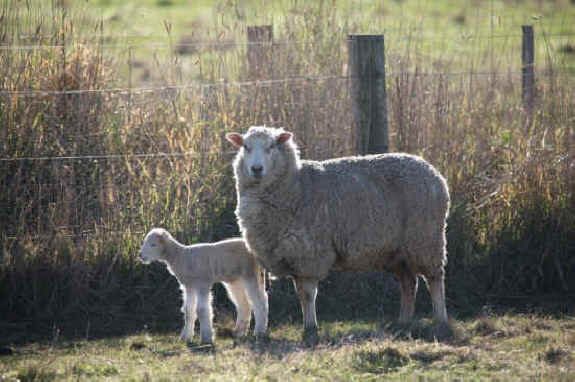

These are broadleaf-specific herbicides, meaning they will not harm grasses. Alternatively, Ohio State Extension and Clemson University Extension report that the active ingredients triclopyr, 2,4-D, dicamba, and MCPA can also provide control of lesser celandine when at least two of these ingredients are combined in the spray mixture. Note that glyphosate is a non-selective herbicide, meaning it will injure or kill most green plants that it contacts so it's important to avoid spray contact with desirable plants as much as possible. Image: The underground tubers of lesser celandine must all be dug up and destroyed if removing this plant by hand. This window helps to minimize the injury to native non-target plants, which usually begin to emerge in late-April to May. The treatment window is quite short, starting before the celandine begins flowering and ending when approximately 50% of the plants are in flower (generally late-March through April in most of Pennsylvania). The recommended treatment is using a glyphosate product with 41% to 54% active ingredient, mixed in water at 1.5% volume. The most efficient and effective control method, especially for larger infestations, is to spray the plants with a systemic herbicide. Image: Bulblets on the stems of celandine will grow new plants. However, this method is difficult because all plant parts, including underground tubers, must be removed and properly disposed of. It is possible to remove small patches by digging them up and sealing all plant parts in a bag for burning or disposal in the trash. If you positively identify lesser celandine on your property, several control options are available. If the plant is growing in a drier site, like an upland slope or a lawn, it is most likely lesser celandine. Additionally, marsh marigold does not form mats or carpets, but rather grows individually, and it will only be found in very wet locations, like swamps and stream banks or lakeshores. The flowers also differ, as lesser celandine usually has 8 narrow, pointy petals (but can have more), while marsh marigold generally has 5 to 9 petals that are more rounded. To tell them apart, look closely at the leaves, the edges of which are usually smooth or gently lobed on lesser celandine, but finely toothed on marsh marigold. When looking for lesser celandine, be careful to not confuse it with marsh marigold ( Caltha palustris), a charming native that looks very similar to lesser celandine. Image: Marsh marigold can be distinguished from celandine by its finely toothed leaves, flowers with more rounded petals, larger stature, and growth habit of individual plants rather than a ground cover. These mats can inhibit or prevent the growth of native plants, especially native spring ephemerals such as spring beauty ( Claytonia virginica), Dutchman's breeches ( Dicentra cucullaria), squirrel corn ( Dicentra canadensis), and others. These multiple reproduction methods help lesser celandine become an aggressive spreader and form dense mats that cover large areas if left unchecked. Lesser celandine reproduces and spreads through seeds, tubers (underground, fleshy, bulb-like structures), and bulblets (small bulb-like structures that grow on the stems). The flowers resemble buttercups, and lesser celandine is, in fact, in the buttercup family (Ranunculaceae).

To spot lesser celandine, look for a low-growing plant with glossy, kidney-shaped leaves up to 4 inches high, with bright yellow flowers on stalks that can reach 9 inches tall. Image: Look for celandine’s small kidney-shaped leaves and yellow flowers. Unfortunately, this plant is still available for sale in the nursery trade. Lesser celandine will also invade lawns and gardens. This invader is most prevalent in floodplains, moist lowlands, and riparian areas near bodies of water, but it can also be found in upland areas with drier soils. Native to parts of Europe, Asia, and northern Africa, lesser celandine was introduced to North America as an ornamental during the 1800s and has become widespread in the northeastern and mid-western United States. The leaves and flowers of spring ephemeral plants are generally gone by late May in Pennsylvania, but their underground parts continue to store nutrients for re-emergence the following spring.

Lesser celandine is a spring ephemeral, meaning it emerges early in spring before trees leaf out, but it doesn’t stick around very long. Image: Lesser celandine can form extensive mats and is especially problematic in floodplains and riparian zones, where flowing water helps move the plant to new locations. However, this is also the time to be on the lookout for a nasty invader: lesser celandine ( Ficaria verna) (synonym =Ranunculus ficaria), also called 'fig buttercup.' What is it? Many people look forward to seeing the first flowers emerge in spring, and there are indeed many lovely plants appearing this time of year.


 0 kommentar(er)
0 kommentar(er)
